10th June 1919 Tuesday
Guard of Honour, Dyer’s Battalion and Bread and Salt.
All material produced or reproduced here and throughout this work is the sole copyright of the author and the family of Doctor D.C.M. Page MC
“On June 10th I went into Archangel in the afternoon to be an interested spectator of the parade of the newly-arrived British troops. Great crowds lined the street, and round about the Triumphal Arch a dense throng had congregated. I took up a good position near the Arch. The streets were lined by Civil Guards, Russian soldiers and sailors, and Boy Scouts and Girl Guides. The Guard of Honour on the quay was composed of Duyer’s Battalion – composed entirely of captured Bolsheviks trained by Capt. Duyer. The new Brigadier-General arrived at the quay where he was met by General Ironsides with his Staff, and the Russian Governor and his Staff. They inspected the Guard of Honour, and then proceeded to the Arch where the Archangel Town Council was assembled in all its glory. An address of welcome was read out by the Lord Provost, and bread and salt offered as a sign of no ill feeling. Then with bands playing and colours flying the new troops, 46th and 47th Battalion Royal Fusiliers, my old regiment, marched past. It was a stirring sight! The Russians cheered loudly which was a good sign.”
As gratifying as it was to the British to get such a warm welcome, to the Americans it seemed like an ungrateful slight. They took no part in the celebration and contemporary accounts recalled the feeling of annoyance at the perceived lack of thanks from the native population. The Americans felt that the British were getting the accolades for the work being done by their troops.
This is the first mention of Dyer’s Battalion. It was formed from former captured red troops and trained by Captain Dyer.
Captain Royce Coleman Dyer was a Canadian officer whose job was to form and command a Disciplinary Battalion. As the Bolsheviks progressed their advance they released many prisoners held in local jails. These men were then something of a problem to Ironside’s administration in Archangel.
Dyer was given the job of trying to sift through them by interrogation, dividing them into three categories. As Ironside himself put it, “The bads, the less bads, and the probably harmless”. About three hundred in number, the thinking was to try and mould them into a useful force as opposed to locking them up and needing to look after them. Many of them impressed by working as stevedores to help load the British ships with timber that adorned the docks waiting shipment back to the UK. Much to the surprise of the authorities those men seemed to be shaping up to a much needed helpful addition to the allied forces.
Dyer was born 1st February 1889 in Sutton, Quebec and had signed up aged 25 on 23rd September 1914 as an infantry private to the 8th Battalion Canadian Infantry. A veteran of the Western Front and wounded three times, each time he returned to action. Posted in 1918 to Russia and promoted to Sergeant he displayed great valour during an operation to Onega under the command of Colonel Thornhill (previously Indian Army). Promoted in the field to the rank of captain by General Ironside he was decorated with the Military Medal and Bar as well as the Distinguished Conduct Medal. Honoured with the Russian Cross of St. George (4th class) he succumbed to pneumonia and died on the 30th December 1918 at the age of 28. So revered was he by his battalion the 1st Slavo-British, that after his death the battalion carried his photograph at the head of any action and the group continued to be known as Dyer’s Battalion.
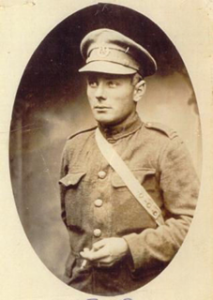
Captain Royce Coleman Dyer https://www.veterans.gc.ca/eng/remembrance/memorials/canadian-virtual-war-memorial/detail/471670
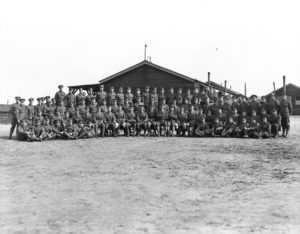
Dyer’s Battalion http://www.bac-lac.gc.ca/eng/CollectionSearch/Pages/record.aspx?app=FonAndCol&IdNumber=3405032
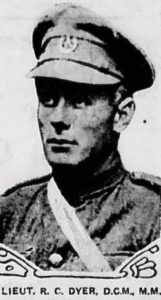
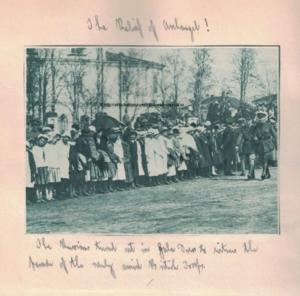
The Russians turned out in Gala Dress to witness the parade of the newly arrived British troops.
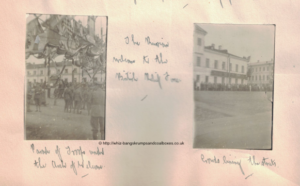
The Russian Welcome to the British Relief Force
Parade of troops under the Arch of Welcome. Crowds lining the streets
Find out about our connection with Dr Page and an introduction to his diary here